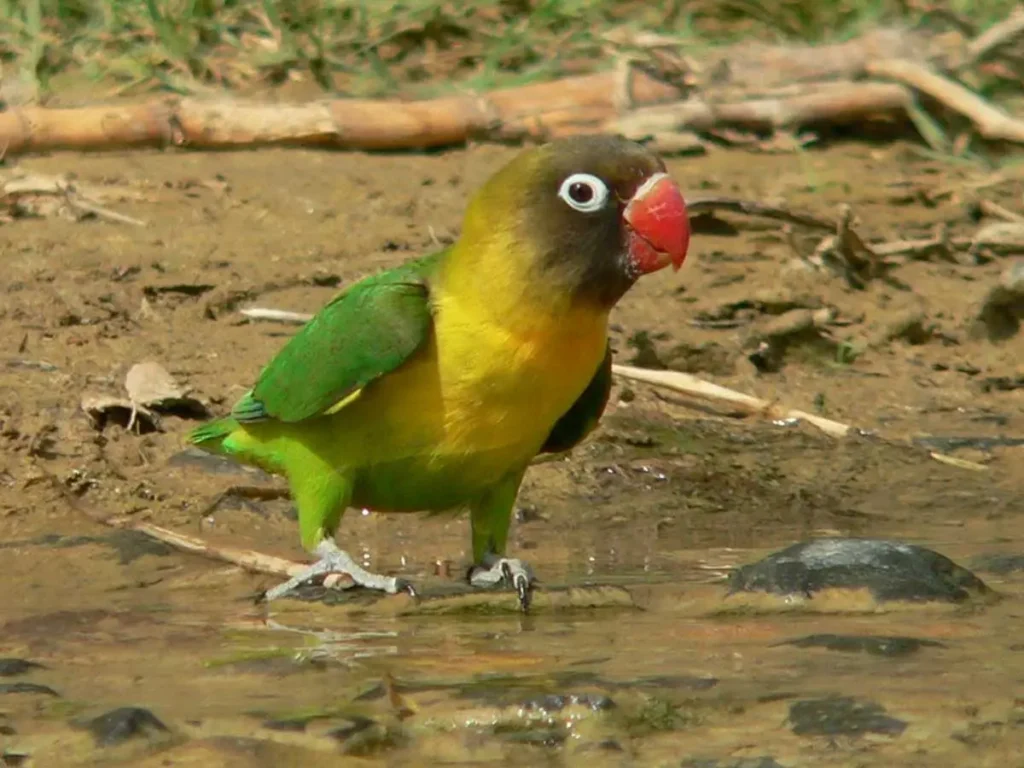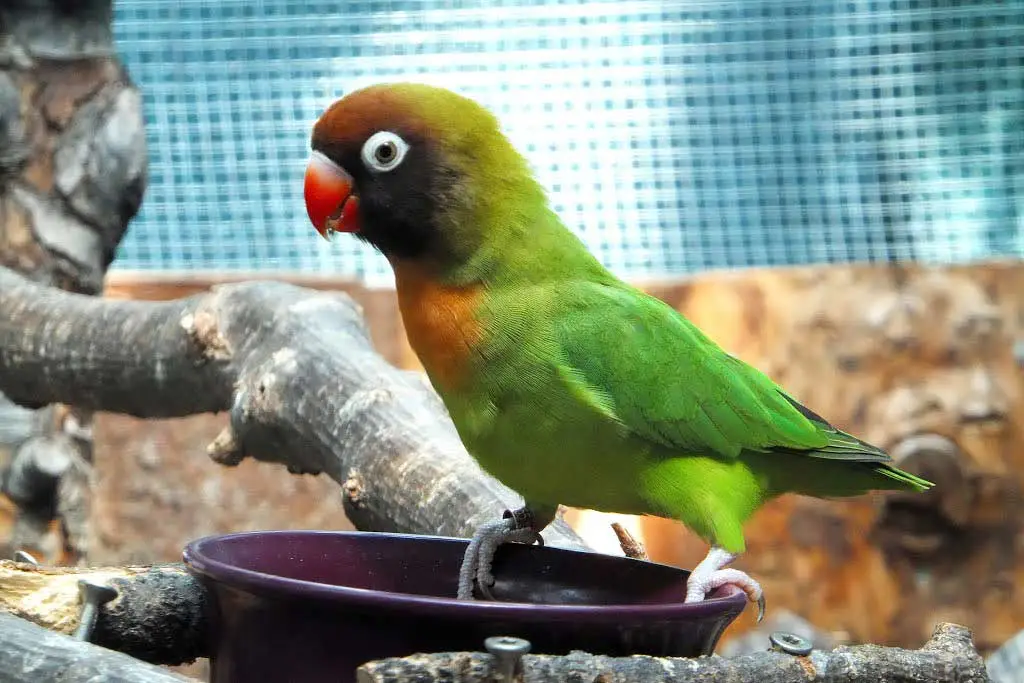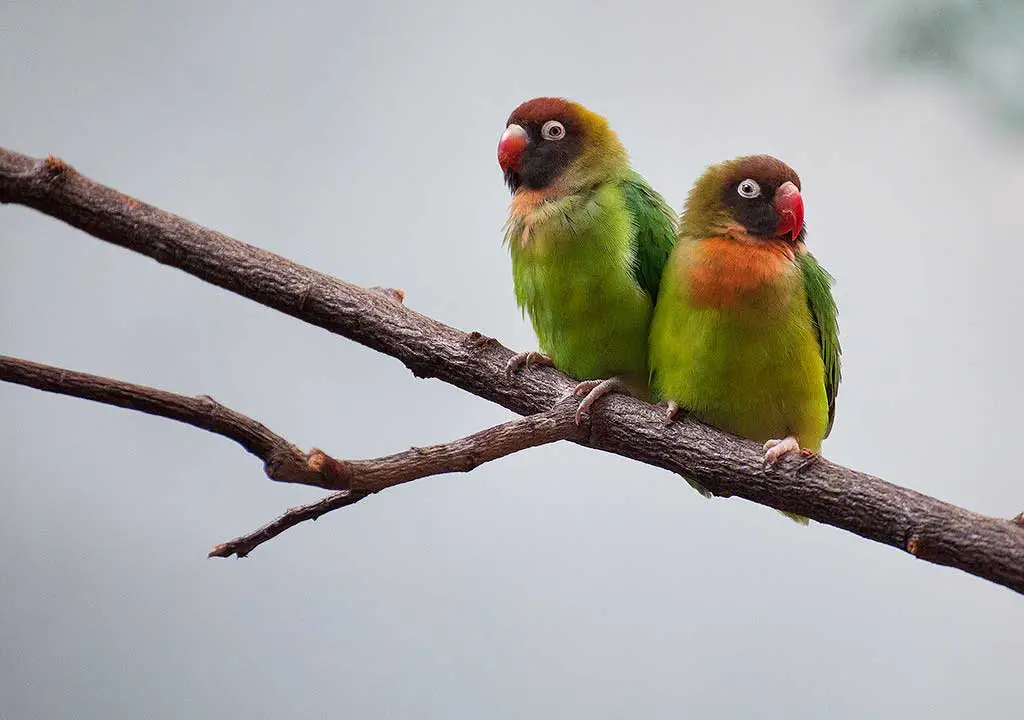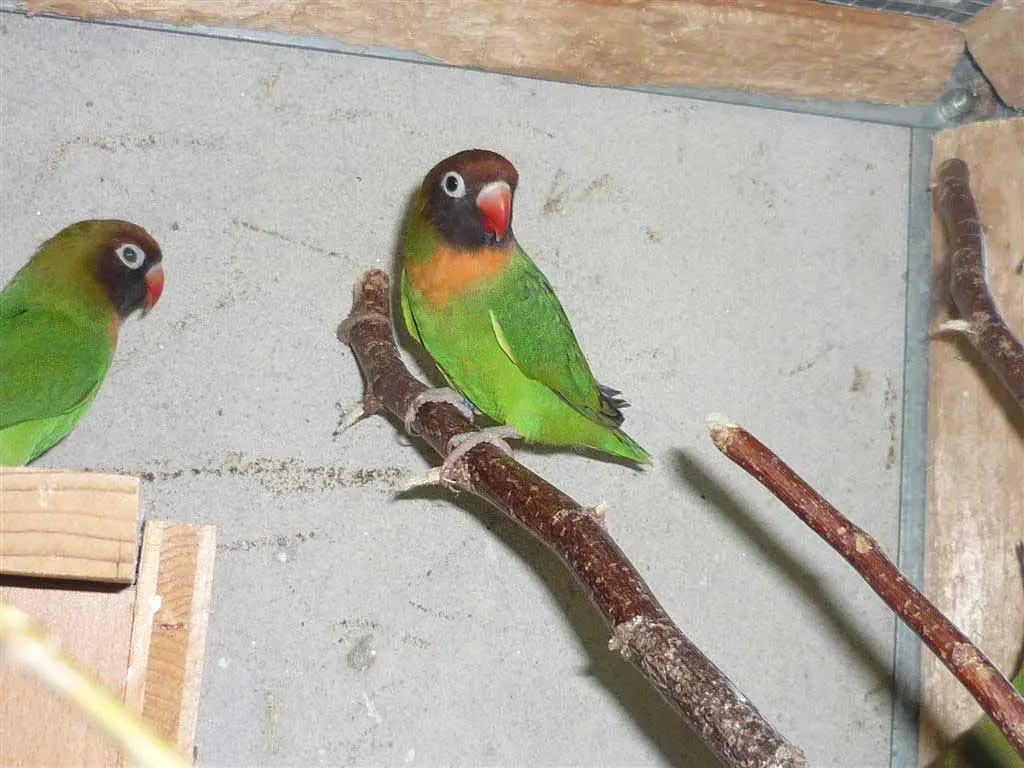
Introduction to the Black-Cheeked Lovebird
The black-cheeked lovebird (Agapornis nigrigenis) is a captivating and vibrant parrot species native to Zambia and Zimbabwe. This small, colorful bird is a member of the genus Agapornis, which includes nine different lovebird species. This guide will dive into the fascinating world of the black-cheeked lovebird, exploring their physical characteristics, distribution, diet, breeding behavior, and more.
Scientific Classification
The black-cheeked lovebird belongs to the genus Agapornis, which includes nine species of small parrots collectively known as lovebirds. The species’ scientific name, Agapornis nigrigenis, refers to its distinct black cheeks and forehead.
Kingdom: Animalia
Phylum: Chordata
Class: Aves
Order: Psittaciformes
Family: Psittaculidae
Genus: Agapornis
Species: Agapornis nigrigenis
Physical Description
The black-cheeked lovebirds are small parrots, measuring about 14 cm in length and weighing around 40-50 grams. They are characterized by their bright green plumage, a dark black head, and prominent orange-red bib on their throat and upper chest. They also have distinctive white eye rings surrounding their dark brown eyes and a red bill. Each eye ring makes it look special an exotic.

Distribution and Habitat
These charming birds are primarily found in the woodland areas of Zambia and Zimbabwe, particularly in regions with mopane trees. They inhabit areas near water bodies, such as rivers and wetlands, as they rely on a consistent water source for survival. Other birds like the black-collared lovebird inhabit in Africa.
Diet and Feeding Habits
Wild Diet
In the wild, black-cheeked lovebirds feed on a variety of foods, including grass seeds, millet, sorghum, and fruits like berries and apples. They also consume insect larvae and vegetable matter, such as green beans and leaves.
Captive Diet
When kept as pets or in aviculture, the black-cheeked lovebirds should be fed a balanced diet consisting of high-quality pellets, a variety of seeds (e.g., millet, canary seed), and fresh vegetables and fruits. It’s essential to consult with a veterinarian to ensure the bird’s nutritional needs are met.
Social Behavior and Breeding
Bonding and Mating
Black-cheeked lovebirds are monogamous and form strong bonds with their mates. They are known for their affectionate behavior, often preening and cuddling with one another.
Breeding Season and Clutch Size
Breeding season typically occurs between January and March, with females laying a clutch of 3 to 6 eggs. The eggs are incubated for about 22-24 days before hatching.
Parental Care
Both parents take part in caring for the chicks, with the male providing food for the female and the young. Chicks fledge at around 5 weeks of age and become independent shortly after.

Aviculture and Pet Care
Housing and Cage Setup
Black-cheeked lovebirds need spacious cages with ample room for flying and climbing. A minimum cage size of 24 x 24 x 24 inches is recommended. Include perches, swings, and ladders for exercise and enrichment. Natural branches can also be provided for the birds to chew on, as they are avid chewers.
Diet and Nutrition: what does a black-cheeked lovebird eat?
One food item that black-cheeked lovebirds enjoy in the wild is insect larvae, which can be a great source of protein for them. However, in captivity, it’s important to provide a balanced diet of pellets, seeds, and fresh fruits and vegetables to meet their nutritional needs. It’s best to avoid giving them high-fat seeds, such as sunflower seeds, in large quantities. Consult with a veterinarian for specific dietary recommendations to ensure your feathered friend is getting all the nutrients they need to stay healthy and happy.
Toys and Enrichment for your black-cheeked lovebird
A black-cheeked lovebird is an active and playful bird, and providing it with the right toys is an essential part of keeping it happy and healthy. Along with toys that allow foraging, puzzles, and chewing, you can also add toys that involve surface water, such as shallow water dishes or small bird baths. Many lovebirds enjoy splashing around in the water, and it can be a great source of stimulation and enrichment for them. Just be sure to change the water regularly to keep it fresh and clean!
Health and Veterinary Care
Regular check-ups with an avian veterinarian are essential to ensure your black-cheeked lovebird stays in good health. Keep an eye out for signs of illness, such as changes in behavior, appetite, or droppings. Some common health issues in lovebirds include respiratory infections, feather plucking, and egg binding. Establishing a relationship with an experienced avian vet is crucial for maintaining your bird’s well-being.
Conservation and Threats of black-cheeked lovebirds
Habitat Loss and Fragmentation
One of the main threats to black-cheeked lovebirds in the wild is habitat loss and fragmentation. Deforestation and human expansion have reduced the availability of suitable habitats, impacting their populations.
Hunting and Trapping
Illegal hunting and trapping for the pet trade pose additional threats to these birds. Although the international trade of wild-caught black-cheeked lovebirds is regulated by CITES (Convention on International Trade in Endangered Species), illegal trade still occurs and puts pressure on wild populations.
Conservation Efforts
According to the IUCN Red List, the back cheeked lovebird population trend is decreasing, and it was categorized as Vulnerable in 2016. The species is present in Zambia, but its presence is uncertain in Botswana, Namibia and Zimbabwe.
Various organizations and governments are working to conserve the black-cheeked lovebird’s habitat and protect them from illegal hunting and trapping. Efforts include habitat restoration, public awareness campaigns, and stricter enforcement of laws related to wildlife trade. Conservation breeding programs are also in place to help bolster the species’ population.

The blue mutation of the black-cheeked lovebird is a popular color variation among pet owners. This mutation causes the bird’s feathers to appear a vibrant shade of blue instead of the usual green. Like the wild-type black-cheeked lovebird, this mutation is a social bird that thrives on interaction with its owner and other lovebirds.
The blue mutation is a popular choice for breeding programs and is often sought after by bird enthusiasts. However, it’s important to note that mutations in birds can come with health risks, so it’s crucial to obtain any pet birds from a reputable breeder and to provide them with proper care and veterinary checkups.
Conclusion
The black-cheeked lovebird is a captivating and vibrant bird species native to Africa, with unique behaviors and characteristics that make them stand out among other parrots. If you’re considering one as a pet, be prepared to offer a loving and stimulating environment to ensure their well-being.
Additionally, being aware of their conservation status and the threats they face in the wild, such as habitat loss, can help promote responsible pet ownership and support for conservation initiatives. By doing so, we can help protect these enchanting birds for generations to come.
